The past year was action-packed for the international watch industry, defined by surprising acquisitions and collaborations and the release and embrace of innovative new designs.
For retailers, industry analysts, and consumers, it’s only natural that anticipation for what lies ahead would be high after such an exciting year.
Just as you might stay up late to reach the end of a gripping novel or a finish must-watch television series, everyone has one question on their mind – what’s next?
The increasing popularity of ‘smaller’ watches was one of the most significant talking points of 2023, as consumers and designers alike favoured comfort over statement.
In January, GQ published a report compiling data from 230 manufacturers to determine if watches are ‘getting smaller’.
Author Cam Wolf found that while the average timepiece has not become notably smaller, larger watches are being phased out.
“The fact that the overall average remained stagnant tells me the pieces we hold up as examples of shrinkage are really just new ends of a widening range,” Wolf writes.
“Maybe it’s not necessarily that all watches are downsizing, but that there’s now a greater variety of available sizes.”
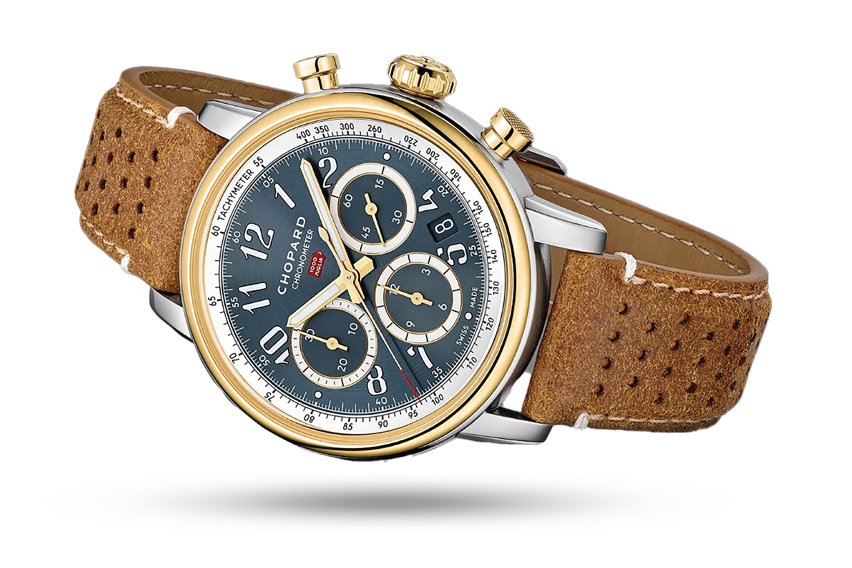 |
| Chopard |
It’s been said that the sign of a truly comfortable watch is that it ‘disappears’ on your wrist – it’s easy to forget it’s even being worn.
Large watches also have to deal with empty space too. When a timepiece is unnecessarily large, excessive negative space can make the design feel empty.
Australian editor of Time and Tide, Jamie Weiss, says that he expects smaller pieces to continue increasing in popularity with local consumers.
“After years of larger case sizes being the dominant trend, I think we’re really starting to see smaller watches come into vogue - or rather, we’re seeing smaller watches finally becoming more popular among Aussies,” he tells Jeweller.
“Big watches have not been truly fashionable at the top of the industry for quite a while, but Aussies - particularly Aussie men - love a big watch and have been a bit behind the curve.”
Weiss attributed this shift in taste to the decreasing relevance of gender in design, as manufacturers increasingly attempt to create products that appeal to both men and women.
“We’ll continue to see watch cases shrink down to more vintage proportions in 2024," he continues.
"I also think there’s definitely an increased interest in vintage watches, especially among Gen Z, so we’re likely to see more retro re-releases like the Piaget Polo 79 that was just unveiled."
When asked about his favourite release of the past year, Weiss drew attention to the Chopard Alpine Eagle, otherwise known as the Sunburnt Red.
The piece was hailed as a breakthrough in watch design and collaboration, with a conservative Swiss luxury watchmaker partnering with an Indigenous artist.
“It’s cool to see a somewhat conservative Swiss luxury watchmaker back a young Indigenous artist – a hardcore punk musician and tattoo artist to boot – and give him an enormous amount of creative control,” he explains.
“They’ve shown respect for Indigenous art and respect for the Australian watch market/community through this collab: it’s a turning point for watches in Australia.”
|
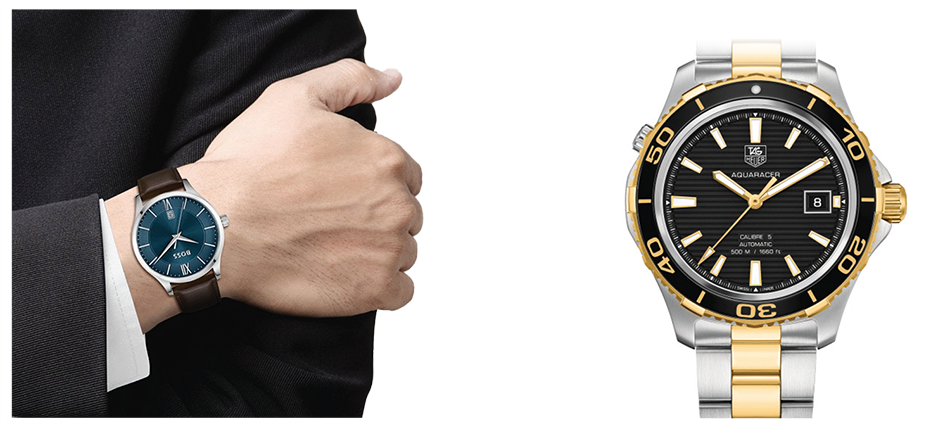 |
| L to R: Hugo Boss, Tag Heuer |
|
Add a splash of colour
The importance of size was a common trend among the watch industry analysts contacted by Jeweller for this story.
Indeed, smaller timepieces are more of a celebration of watchmaking.
Namely, the craftsmanship required to create an intricate clockwork far exceeds that of a large, cumbersome, but eye-catching design.
Frank Geelen of Monochrome Watches says that he expects practicality and size to be a keen focus for designers.
“I’m expecting to see smaller, slightly more compact watches – back to 38-39mm for non-complicated watches, and 41-42mm as a maximum for chronographs and complications,” he explains.
“We’ll see fewer complications for the sake of complication and more practical usable watches for daily wear. Ultra-thin is also a trend that is strong.”
Geelen also noted the increasing importance of colour in design, even for traditionally conservative manufacturers.
Over the past 12 months, designers increasingly incorporated exotic materials for dials to offer a point of difference to competitors.
Put another way; there was a notable shift in the use of colour in dials as brands searched for new ways to stand out in a crowded market.
“The trend of more colourful dials, something that used to be reserved for niche brands, has now found its way to mainstream major brands,” Geelen continues.
“I liked seeing more luxury and elegant sports watches, such as the Louis Vuitton Tambour, various AP Royal Oak models, Laurent Ferrier Sport Auto, and also the very affordable Tissot PRX.”
He continues: “One particular piece that has my full attention is the first Rolex in titanium, the Yachtmaster in RLX titanium. The other one is the Chopard LUC 1860 with the salmon dial – that’s timeless elegance!”
The Louis Vuitton Tambour was also a release of great interest to Nick Hall of Man of Many, who suggests that it may have signalled a serious change in strategy.
The brand’s iconic watch was reinvented with aunisex design featuring a slim case, a ‘first-of-its-kind’ integrated bracelet and an exclusive automatic movement.
“I think the release of Louis Vuitton's Tambour last year was an interesting moment for the watch world,” Hall explains.
“The luxury brand's flagship collection marked a renewed focus on traditional watchmaking that made a lot of purists stand up and take note.
"It didn't so much signal a changing of the guard, but it did show that brands outside of the known watchmaking sphere could measure up to the Swiss masters. That may be an unpopular opinion, however.”
|
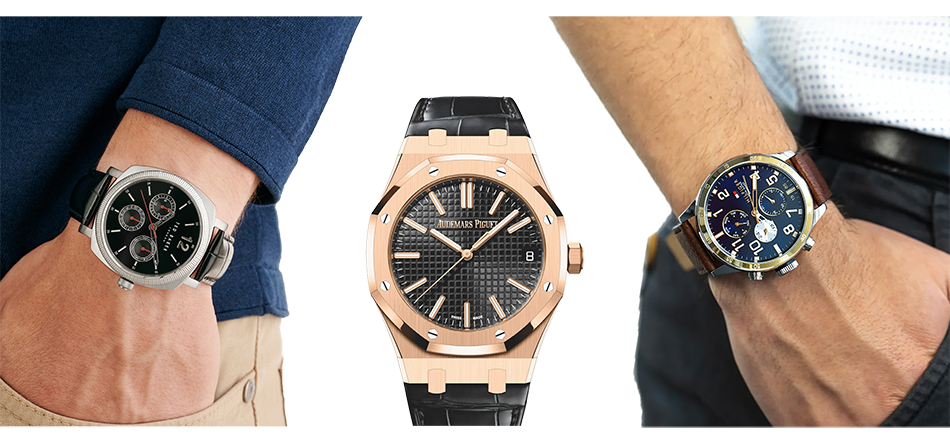 |
| L to R: Ted Baker, Audemars Piguet, Tommy Hilfiger |
|
Hold your horses
With consumer confidence and discretionary spending at low levels, many analysts expect industry leaders to ‘play it safe’ in terms of design.
This may lead to an emphasis on vintage pieces embodying ‘classic’ designs that are proven performers with watch collectors.
“Admittedly, the boom in luxury watches is starting to slow down, the result of economic constraints and a rising cost of living, so it's unlikely that we'll see watchmakers try anything too ambitious this year,” explains Hall.
“I predict that most brands will stick to their 'greatest hits' and look to roll out anniversary models whenever possible. For established players, the ability to dip into the archives and revamp historical pieces will continue to be an important point of distinction.”
Hall pointed to recent releases from Longines and Rado as examples of this principle in action, with iconic brands revisiting classic collections and revitalising them with new materials and movements.
He suggests that this has increased the popularity of vintage-inspired designs, characterised by smaller case sizes, simple dial layouts and GMT functionality.
With that said, this may also open the door for emerging watch brands to capture new market share by offering innovative new products to consumers who don’t want to see ‘more of the same’ from major players.
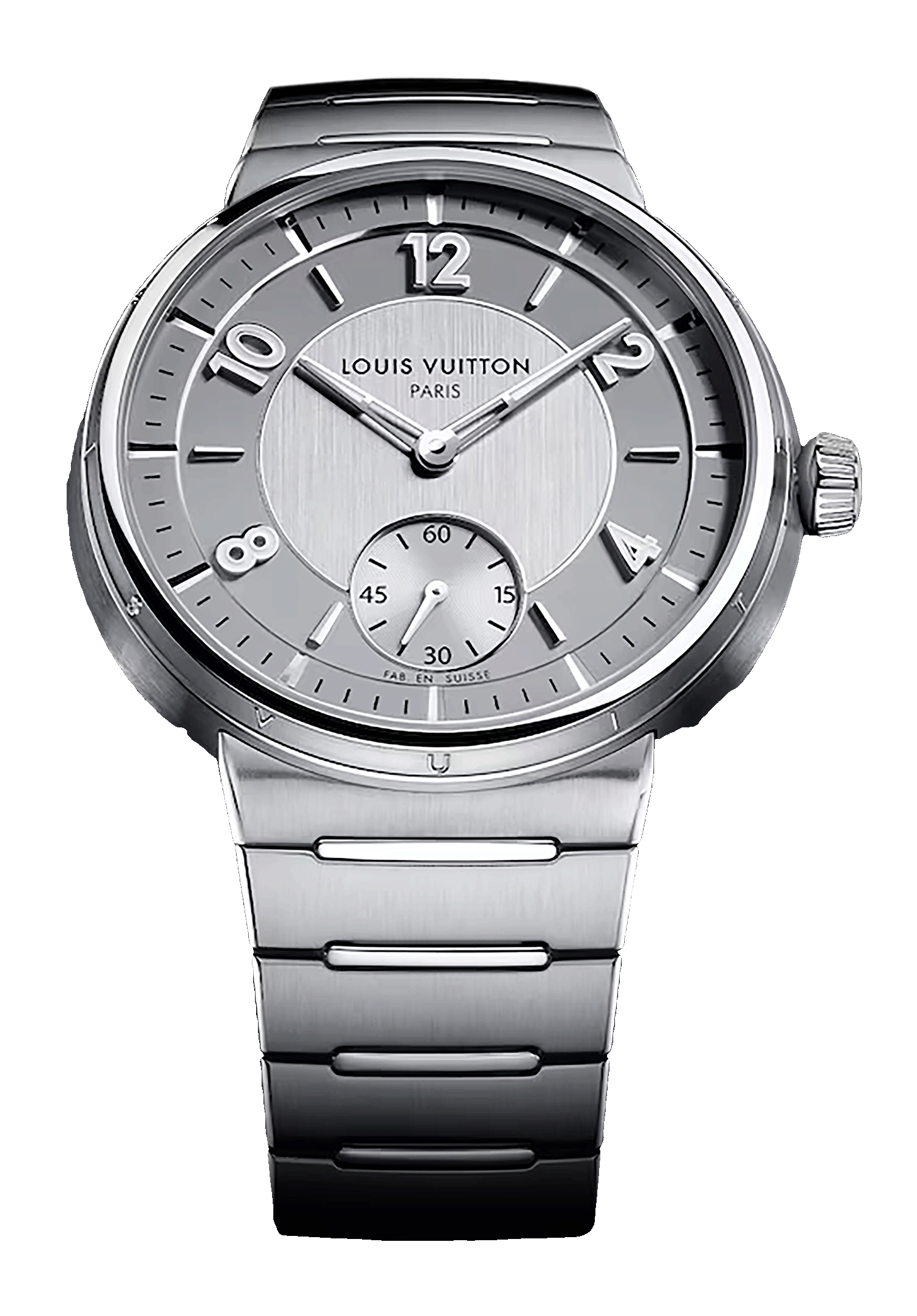 |
| Louis Vuitton |
“Over the past three to five years, we've seen a significant uptick in interest across the watch market, predominantly within the luxury category,” Hall continues.
“Brands such as Rolex and Omega will always be popular with consumers; however, watch fans are slowly broadening their horizons, actively working to educate themselves on microbrands and mid-tier luxury maisons. I expect this to continue in 2024.
Ariel Adams of A Blog To Watch agrees with Hall and thinks that major brands will avoid taking significant risks.
“Since we are in economically uncertain times, we will have large companies being very conservative and trying to make the watches they think the market currently wants,” Adams explains.
“Very little inventiveness and risk from the major watch brands in 2024 is most likely. Smaller brands will again have to be risky and provocative to get attention after a few easy years of doing business, thanks to spillover demand from Rolex.”
Adams says that regardless of the direction these major manufacturers are taking, one thing is sure: finding out in advance will be difficult!
“As you know, watchmakers are often quite secretive about what they are going to release,” he says.
|
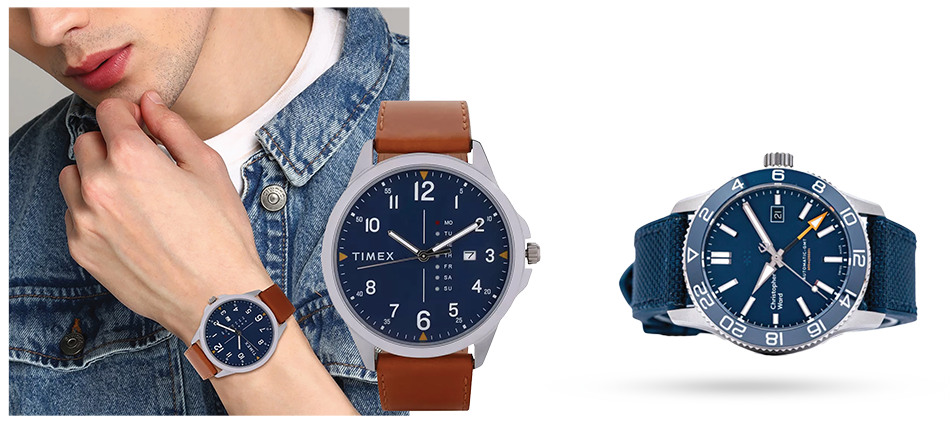 |
| L to R: Timex, Christopher Ward |
|
Wind back the clock
Vintage and heritage-inspired timepieces remain as hot as ever; however, one analyst believes that manufacturers can’t afford to release anything uninspired.
“It's getting to the point where the designs need to be extremely well-executed to get any attention,” writes Shane Griffin of Worn and Wound.
“In fact, the vintage-inspired pieces that get a lot of attention - at least from watch blogs - are ones that have their own unique take on vintage, such as Lorca, Farer, Serica, and Laventure.”
Few brands have enjoyed as much attention as Christopher Ward in recent years. After a brand ‘reinvention’ in 2020, the increased price and quality of timepieces have increased popularity among collectors.
In 2023, Christopher Ward launched a new line of integrated bracelet sports watches that was one of the most passionately discussed releases.
“Certain brands like Christopher Ward, Formex, and Ming have made room for some non-traditional designs/features that we'll likely see more of. I think the integrated bracelet trend will slow, but not necessarily to a halt,” explains Griffin.
The market is generally moved by 80 per cent of what I would consider the ‘status quo’ for watch design, but it's the 20 per cent that is the most interesting, and I think most of that segment will be microbrands trying to fight for a piece of the smaller pie.”
Another analyst quick to raise the significance of the Christopher Ward phenomenon was Rhonda Riche of Watchonista, who said C2Bel Canto was one of her favourite releases of the past year.
“It’s a tough call. 2023 was a good year for watches, but there were so many releases,” she says.
“The Christopher Ward C2Bel Canto stands out because this mechanical chiming watch was a little unexpected but beautiful and accessibly priced. It’s not surprising that it was an award winner.”
Recipe for success
While the watch industry strives to offer ‘something for everyone’ given how competitive the market is, collectors are notoriously tricky to please.
While the past year brought about significant innovation in design, Griffin says that he hopes manufacturers continue to push the envelope.
“I guess I'm a bit of a curmudgeon when it comes to watches, and it takes a lot to impress me these days,” he jokes.
“I would stop well short of saying there weren't any nice watches released in 2023; however, I honestly wasn't moved much by last year's novelties.”
While heritage and vintage-inspired designs are popular, offering something fresh is always the recipe for success. Griffin says there are several examples of watchmakers hitting the right balance between tribute and revitalisation.
“That said, I've been impressed with a number of microbrands in general, and I do appreciate Omega's continued push to advance movement quality,” he adds.
“I also think it's fair to give kudos to TAG Heuer and Breitling for tightening up some of their designs
and properly calling back their heritages without making 1:1 reproductions.”
Indeed, in a market as sensitive as watches and timepieces, predicting significant change is always difficult.
Consumer tastes are fickle and can change quickly, while manufacturers and brands remain tight-lipped about future plans.
With that said, it’s shaping up to be another year to remember for the watch industry.
BRAND DIVE EDOX'S ANNIVERSARY 140 YEARS OF WATCHMAKING Among the many Swiss brands occupying shelves and showcases in Australian stores sits EDOX, a watchmaker planning to celebrate an important anniversary with new special edition releases. EDOX – otherwise known as Montres Edox et Vista SA - was founded in the watchmaking hub of Biel in Switzerland by Christian Ruefli-Flury in 1884. EDOX celebrates its 140th anniversary this year, with festivities beginning in the Swiss city of Les Genevez, where the company manufactures more than 70,000 watches annually. The brand will mark the anniversary in all of the traditional ways – including special edition timepieces and new partnerships. Head of global sales, Leonhard Schweiger, says the brand will also use the opportunity to reflect on the past. “In a fast-moving world, remaining relevant is becoming more and more of a challenge. This said, a family-owned structure is not necessarily a downside in this case,” he tells Jeweller. “It actually allows decisions to be taken quite easily and fast since the members of the family have been in charge of strategic positions for several years now." He continues: "The most important point, then, is to find the right balance between modernity and heritage.” Since the 1960s, EDOX has specialised in producing diving watches, creating many patented technical features. For many collectors, choosing the right dive watch can lead to an endless rabbit hole of specifications, designs, and brands. The fundamentals are simple; however, there is a need for utility, durability, and versatility to ensure that it’s capable of being both a prized possession and everyday wear. While it can be a headache for consumers to choose the suitable model, there’s a good reason why they’re so popular – the proper dive watch is a blend of practicality and sophistication. Over the years, EDOX has distinguished itself through extremely water-resistant diving watches, which usually indicate both high-quality material and sophisticated case design. Schweiger says that offering value for money and maintaining high production standards has been pivotal to the brand’s success across 140 years. “Consistency has been the main ingredient for longevity, and that is how we want to celebrate.” After a three-year hiatus, EDOX returned to Australian stores in July 2022, announcing a new partnership with Duraflex Group Australia (DGA). Until 2019, the brand was distributed in Australia by Lion Brands. The brand announced its return at the 2022 International Jewellery Fair in Sydney, where it was well-received by retailers. Marketing emphasised the importance of the Swiss watchmaker as being family-owned, offering a key point of difference from other mass-production brands. Expected to benefit from significant product development and repositioning, at the time, DGA managing director Phil Edwards was optimistic about the brand’s prospects in the Australian market. Two years later, he says the brand has rewarded that faith. All watches are hand-assembled in Les Genevez, Switzerland, with a single watchmaker responsible for assembly and regulation. Edwards says that’s been a decisive factor for many Australian retailers looking for quality assurance. “A lot of the initial retailers wanting to stock EDOX were watchmakers – having worked with many of the Swiss watch brands, they had great confidence in the quality of the watches,” he explains. “EDOX is the clever alternative to mass production brands. Given that some of those mass brands are exiting wholesale – our retailers are delighted to partner with a family-owned independent Swiss watch brand.” In the 1960s, the watchmaker released its iconic SkyDiver timepiece – a rugged high-performance tool watch produced for a Swiss military group. In the years that followed, the SkyDiver evolved, and its function-forward design eventually became the foundation of the Neptunian collection. When examining the EDOX catalogue today, it’s hard to look past the new EDOX Neptunian Grande Réserve, which meets all the style requirements of a modern dive watch while preserving the features that allow for durability. Edwards says this ability to innovate and evolve while maintaining the character of past designs makes the brand so popular. “EDOX provides high-quality Swiss watches with irreproachable water resistance at affordable luxury price points - these are the main components to reach consumer satisfaction, and that is what the brand delivers,” he says. Resilience in legacy, resilience in buildCompetition in the luxury market is fierce. There’s something for everyone, meaning consumers will find the perfect watch with enough research. Conversely, this diversity in brands leaves many retailers exhausted when trying to make the ‘right’ choice about what to stock. “140 years of history means credibility and a rich heritage. There’s no denying this is a highly competitive category, but what sets EDOX apart is their willingness to truly collaborate with retailers – not dictate to them,” Edwards explains. “The brand's diverse range of collections also plays a key role in attracting retailers and consumers. EDOX offers a wide variety of styles catering to different preferences and lifestyles. “This versatility allows retailers to curate a diverse selection, appealing to a broader consumer base.” As a final note, dive watches are an unusual contradiction among collectors. In terms of practicality, most people do not need a watch that can survive a trip to the bottom of the ocean. With that said – this level of durability and performance is undeniably appealing. It’s akin to owning a sports car that can do 250 km/h – you’ll likely never drive that fast, but for some strange reason, it’s nice to know it’s possible. For Australian consumers, a dive watch is appealing for all the same reasons – we may never leap from an aeroplane above Airlie Beach or set a course record at Bathurst; however, there’s a sense of comfort in knowing that should that opportunity ever arise, we’ll have the right watch for the job. |
READ EMAG